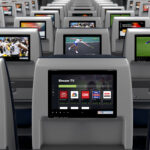
Investing in Live Sports for In-Flight Entertainment Helps Airlines’ Bottom Lines
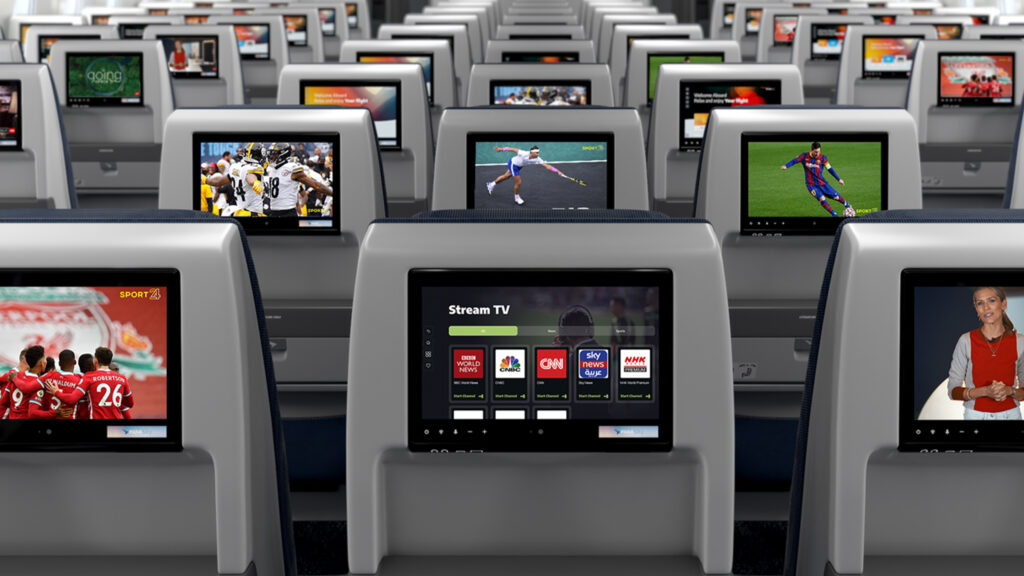
It is increasingly common for an airline to offer some kind of in-flight entertainment for its passengers, whether through seatback screens or personal devices. One way that airlines can further improve their bottom lines is by adding live sports to their in-flight entertainment (IFE) offering.
Customers have always cared about the quality of the in-flight experience. As air travel makes a comeback from the challenges of the COVID-19 pandemic, it’s even more important to consider what components contribute to a positive experience for passengers.
Watching live events is a unique and valuable experience for many across the world. Especially for national and international competitions, like the World Cup, in-flight viewership can increase tenfold, according to Dominic Green, Senior Director of Product Line Management at Panasonic Avionics. “To harness that ability [to watch live events]—and to take credit for it as an airline that provides access to these unmissable moments—is extremely powerful for curators of the passenger experience,” he explained.
Green added, “Showing live sports on board brings the in-air experience closer to the expectations consumers have on the ground.”
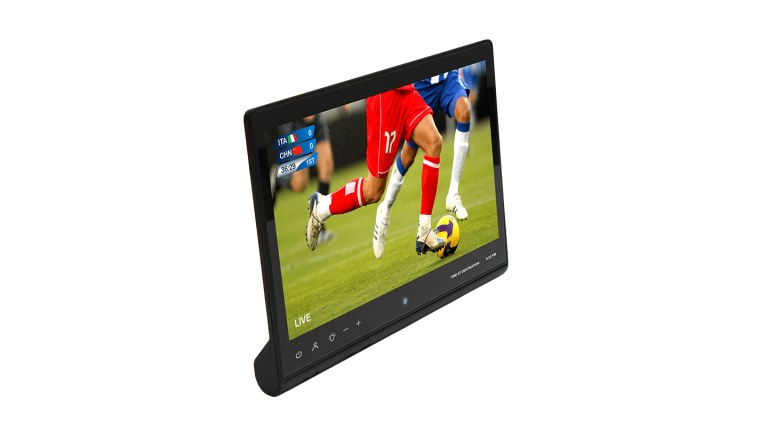
Airlines can take advantage of the widespread interest in sports by making live events available for viewing in-flight. Men account for about 60% of the market for sports viewership, but women are responsible for purchasing close to half of all NFL merchandise. In fact, nearly 80% of all sales of sports apparel are conducted with women, according to a recent NYU study cited by Panasonic.
Panasonic Avionics has partnered with IMG to offer Sport 24 and Sport 24 Extra for in-flight entertainment. Live sports are a core part of Panasonic’s offerings for passenger engagement, in addition to live news. According to the company, including live sports with IFE can have a positive impact on budgetary efficiency and tangible metrics.
“Live content is unmissable, and the must-see element can mean changing the way airlines think about appropriating content budgets,” Green shared.
He added, “More time spent engaging with other content experiences like maps or live television means less time and resources that airlines need to allocate in pursuing giant, expensive libraries of content.”
Panasonic Avionics provides high-speed in-flight connectivity for the commercial aviation industry. Their connectivity services provide coverage for 99.8% of global flight routes. Panasonic and OneWeb entered into a distribution agreement to add low earth orbit (LEO) networks to Panasonic’s satellite network. The company’s single panel antenna, or SPA, is a Ku-band antenna with a simplified design that is mounted on the fuselage. Panasonic invests in electronically-steered antennas (ESAs) for LEO and GEO constellations.

Viasat Achieves First In-Flight Connectivity Type Certification in China
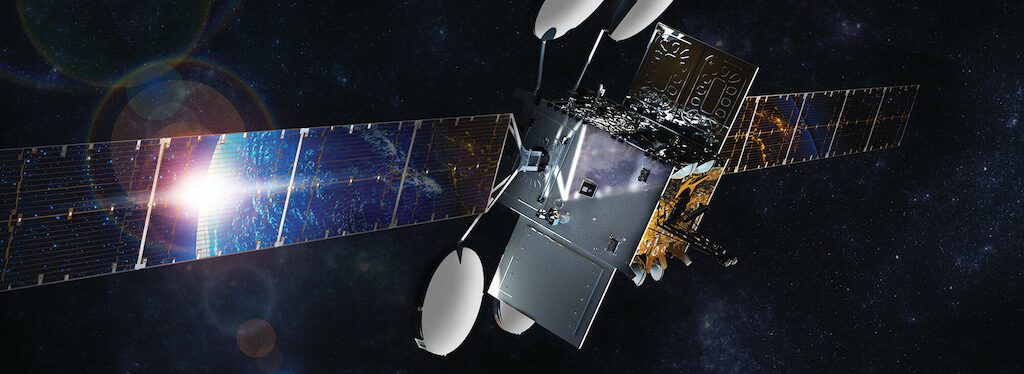
Viasat has achieved the first type certification for its in-flight connectivity system in China on the Airbus A320.
The Civil Aviation Administration of China (CAAC) issued a Validation of Supplemental Type Certificate (VSTC) to the satellite operator for the installation of Ka-band satellite systems on Airbus A320s. Under the new VSTC, A320 operators based in China can modify their aircraft with Viasat’s antenna, radome, modem, server, and wireless access points (WAPs).
According to Viasat, the new VSTC was issued based on an Airbus A320 STC previously certified by the European Union Aviation Safety Agency (EASA). Xinhua, a Chinese media outlet managed by China’s government, in February published an update noting that Airbus plans to deliver the 600th A320 family aircraft assembled at its final assembly line in north China’s Tianjin Municipality this year.
Don Buchman, Viasat’s vice president and general manager, Commercial Aviation, called their first Chinese type certification “significant because Chinese-based airlines, using our best-in-class equipment, are now a step closer to delivering an on-the-ground internet experience to their passengers while in-flight. We’re grateful to our partners in China for their support and are committed to continuing to invest in this important market—where we have operated since 1994—for the long run.”
Viasat’s CAAC A320 type certification comes following a November agreement established with China Satellite Communications (China Satcom) that will allow the satellite operator to offer its Ka-band service to domestic and international airlines via the Ka-band ChinaSat-16 satellite system.

Alaska Airlines Taps Intelsat to Provide Flat Rate IFC Service on 105 Aircraft
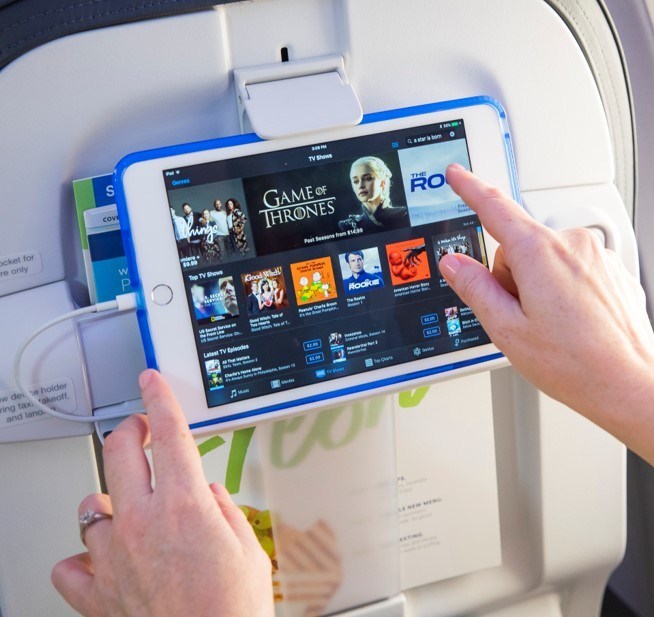
Alaska Airlines is expanding its partnership with Intelsat to provide in-flight connectivity (IFC) on 105 of the company’s new fleet of Boeing 737MAX aircraft. Intelsat-equipped aircraft deliveries have already commenced and will continue through 2024 across Alaska Airlines’ new 737-9s.
The airline already operates Intelsat’s 2Ku IFC service on 150 aircraft, after first partnering with Gogo in 2010. Intelsat acquired the commercial aviation segment of Gogo in 2020. The deal announced Thursday is the largest expansion of the IFC relationship between the two companies to date.
Alaska Airlines said in its own release that the service will give guests better reliability, faster connections, and a lower cost. The company reported its web portal now loads 50% faster than before with a “one-click-to-connect” web experience, and connection speeds are 20 times faster than the previous, basic Wi-Fi system. The company also announced a new $8 flat rate for Wi-Fi service on mainline aircraft equipped with satellite-enabled connectivity.
“Alaska is committed to delivering a connected experience that gives their guests a high-speed internet service and high-quality content. I couldn’t be happier that they chose Intelsat as their partner,” said Dave Bijur, senior vice president of commercial in Intelsat’s commercial aviation division. “Our continuous launch of satellites over the next several years, starting with Intelsat 40e next year, puts us in a position to deliver reliability, redundancy and speed – all of which maximize guest satisfaction.”

SpaceX Enters In-flight Connectivity Services Market with Hawaiian, JSX Deals
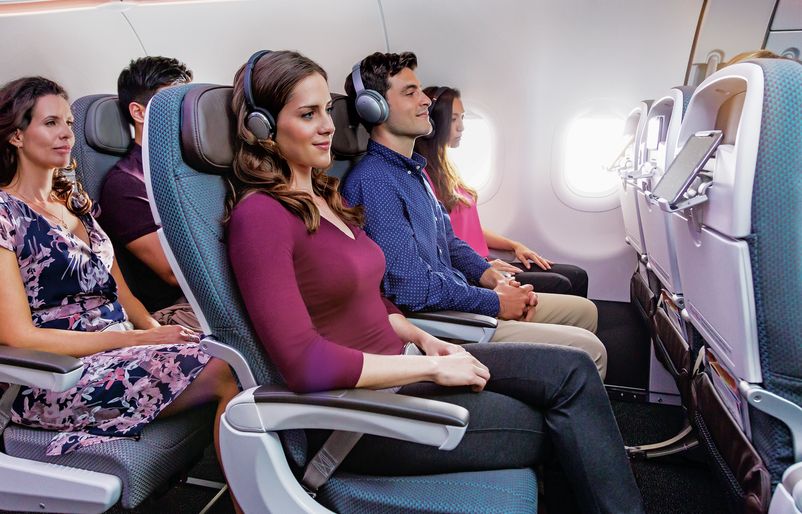
SpaceX made its official entry into the in-flight connectivity (IFC) service provider marketplace this month, with JSX and Hawaiian Airlines subsequently announcing deals to use the company’s Starlink satellites on their aircraft.
Starlink is a constellation of satellites in Low-Earth Orbit (LEO) that provides broadband internet service in areas where terrestrial options are too expensive, unreliable, or unavailable. At the beginning of 2022, Via Satellite reported that Starlink serves more than 145,000 users in 25 countries and regions.
“Pretty fly for a WiFi. First antenna installed and testing. Rapid deployment once certification achieved,” Alex Wilcox, CEO of JSX, tweeted on April 22 to announce the California-based public charter air carrier’s new deal with SpaceX.
The majority of routes operated by JSX are between airports located in California and southwestern destinations, with a fleet of 77 total Embraer 135s and 145s. The JSX brand is a subsidiary of private charter JetSuite, and it focuses on providing short-haul flights at prices that compete with commercial airline business cabin fares. The company previously had committed to becoming the launch customer for the SmartSky Networks IFC service.
Jonathan Hofeller, who serves as vice president of SpaceX, has also discussed the company’s plans for in-flight connectivity services in several public appearances over the last year.
During a virtual appearance on a Connected Aviation Intelligence panel discussion about LEO satellite IFC for aviation services, Hofeller said the company has developed its own IFC terminal that leverages its phased array consumer antenna for aviation.
“High-speed, low-latency internet is critical in our modern age, and during air travel is no exception,” Hofeller said in a statement, commenting on the JSX agreement. “With Starlink, we’re able to provide an internet experience similar to or better than what passengers experience at home. We are creating a future that when all customers walk on to the plane, the internet just works – no hassles, no logins. By being the first air carrier to adopt Starlink, JSX is setting this new standard for air travel.”
Several days after the JSX announcement, Hawaiian Airlines unveiled its own new agreement with SpaceX to add Starlink connectivity to its fleet of Airbus A330 and A321neo aircraft, as well as the Boeing 787-9s it currently has on order.
Hawaiian’s fleet of Boeing 717s that operate shorter inter-island flights will not be equipped with Starlink IFC terminals. According to the airline’s 2021 annual report filing, Hawaiian’s in-service fleet consists of 24 total A330-200s and 18 A321neos, with 10 total 787-9s on order under a 2018 purchase agreement with Boeing.
Peter Ingram, CEO of Hawaiian Airlines, discussed the Starlink agreement during the company’s first quarter earnings call, held on April 26, noting that the Starlink IFC speeds will “support fast web browsing and streaming that we’ve gotten used to on our devices on the ground.”
Ingram expects aircraft modifications for the new service to begin next year, and will have more details about when the first Starlink IFC-equipped passenger carrying flight will occur later this year. “We will be deploying it with a simple interface and free of charge to all our guests for however many devices they are accessing on board. We have deliberately trailed the industry in deploying in-flight connectivity because current and previous generations of products perform below our standards over the Pacific, where most of our time in-flight is spent,” he said. “Until now there was no offering that provided a superior product to match the rest of our in-flight experience. Starlink changes this, and we think our guests will be delighted when they have the chance to experience it.”

#CAIPODCAST Ep. 76: Ethiopian Airlines USA Regional Director Talks Pandemic Recovery, Air Cargo and More
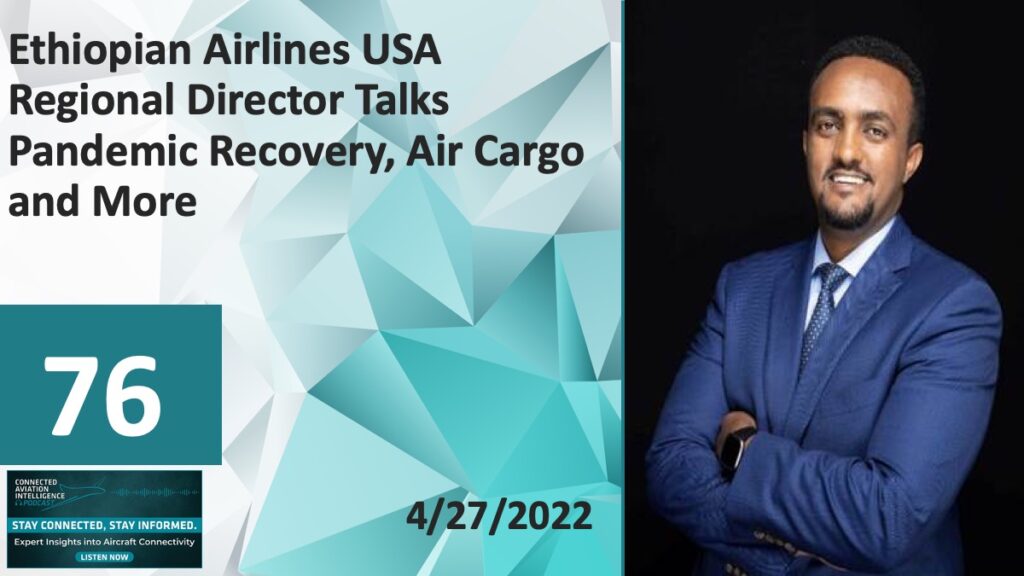
On this episode of the Connected Aviation Intelligence Podcast, we’re joined by the new regional director for U.S. operations of Ethiopian Airlines, Samson Arega.
After a three-year stint as the country manager of Ethiopian Airlines’ Canadian office, Arega transitioned to his new position as the leader of U.S. operations for Ethiopian earlier this year. Arega provides some perspective on how Ethiopian’s air cargo operations continue to grow, how the airline never fired any of its employees throughout the entirety of the pandemic, and some perspective on the airline’s in-flight Wi-Fi and other new technologies it is using.
Have suggestions or topics we should focus on in the next episode? Email the host, Woodrow Bellamy, at [email protected], or drop him a line on Twitter @WbellamyIIIAC. Also, check out the agenda for the 2022 Connected Aviation Intelligence Summit just posted to our event website!
Listen to this episode below, or check it out on iTunes or Google Play. If you like the show, subscribe on your favorite podcast app to get new episodes as soon as they’re released.

Sun Country Chief Marketing Officer Confirmed as Keynote Speaker at CAI 2022

Brian Davis, the Chief Marketing Officer of Sun Country Airlines, has been confirmed as the opening keynote speaker for the third day of the 2022 Connected Aviation Intelligence Summit.
Brian was appointed Sun Country’s Chief Marketing Officer in January 2018. He previously served as Special Advisor on Business Strategy to Wingo, a subsidiary of Copa Airlines, and Adjunct Professor of Marketing and PR at California State University – Los Angeles. From 2005 to 2017, Brian served in several leadership roles at Allegiant Air, including Vice President of Marketing and Sales. He holds a Master of Business Administration from The Wharton School.
Davis provided some perspective on low cost airline investment in in-flight connectivity equipment and service last year to Avionics International, one of the two publications behind the Connected Aviation Intelligence Summit. Check out his interview here, and be sure to register for this year’s Connected Aviation Intelligence Summit to see his keynote speech live!

#CAIPODCAST Ep. 75: IAMA Talks Connectivity, Navigating Crisis and Labor Challenges for Aircraft Modifications

On this episode of the Connected Aviation Intelligence Podcast, we’re joined by the new managing director of the Independent Aircraft Modifier Alliance (IAMA), Nina Schulz, and IAMA’s Alliance Manager, Annelouise van Dijke, to discuss some of the organization’s latest progress advancing their goal of making independently provided aircraft maintenance more competitive against offerings provided by OEMs.
IAMA was first launched in 2019, and has grown its membership and subscribers to include Collins Aerospace, CarlisleIT, Envoy Aerospace, Etihad Engineering, and Lufthansa Technik, among others. The organization has been striving to improve the aftermarket supplemental type certification process for airlines and lessors since its inception. Schulz provides some progress updates after the first IAMA member completed the first IAMA audit process, an outlook for 2022, and some thoughts on how the process for acquiring, modifying, and operating in-flight connectivity on aircraft continues to evolve.
IAMA is hosting its next Virtual Think Tank (IVTT) on March 16 at 3 PM CET.
Have suggestions or topics we should focus on in the next episode? Email the host, Woodrow Bellamy, at [email protected], or drop him a line on Twitter @WbellamyIIIAC. Also, check out the agenda for the 2022 Connected Aviation Intelligence Summit just posted to our event website!
Listen to this episode below, or check it out on iTunes or Google Play. If you like the show, subscribe on your favorite podcast app to get new episodes as soon as they’re released.

#CAIPODCAST Ep. 70: Intelsat’s John Wade Talks Future of Software-defined Satellites and In-flight Connectivity

On this episode of the Connected Aviation Intelligence Podcast, we feature a sponsored interview with Intelsat.
John Wade, president of the commercial aviation division of Intelsat, joins the episode to explain how the introduction of software-defined satellites will revolutionize in-flight connectivity (IFC).
Intelsat signed a contract with Airbus to build two OneSat satellites operating in multiple frequency bands that will power their next-generation software-defined network earlier this year.
John talks about how that technology will improve in-flight connectivity performance and also gives a status update on Intelsat’s current install base in terms of the number of connected commercial aviation aircraft using their current satellite network.
Learn more about how Intelsat is shaping the future of connected air travel by clicking here.
Have suggestions or topics we should focus on in the next episode? Email the host, Woodrow Bellamy at [email protected], or drop him a line on Twitter @WbellamyIIIAC.
Listen to this episode below, or check it out on iTunes or Google Play If you like the show, subscribe on your favorite podcast app to get new episodes as soon as they’re released.

#CAIPODCAST Ep. 68: Euroconsult Talks In-flight Connectivity Outlook for Business and Commercial Aviation

On this episode of the Connected Aviation Intelligence Podcast, we feature a discussion with Xavier Lansel, senior consultant for Euroconsult.
Xavier joins the episode to discuss some of the details featured in their recently published ninth edition of their annual in-flight connectivity market report, that provides a comprehensive analysis of the market’s global trends and forecasts for the next decade, in terms of connectivity provided to onboard passengers.
In the report, Euroconsult predicts that the number of connected aircraft could double by the end of this decade, and there will be between 16,000 and 20,000 connected aircraft by 2030. The 2021 edition shows that around 9,000 aircraft across 115 airlines are currently equipped with In-Flight Connectivity (IFC) terminals — a reduction of 2.5 percent compared to the previous year. Over 80 percent of these aircraft were connected through satellite connectivity, with the remainder connected through Air-to-Ground. The rate of new installations was much lower this year as a result of regional lockdowns, leading to difficulty in accessing aircraft.
Have suggestions or topics we should focus on in the next episode? Email the host, Woodrow Bellamy at [email protected], or drop him a line on Twitter @WbellamyIIIAC.
Listen to this episode below, or check it out on iTunes or Google Play If you like the show, subscribe on your favorite podcast app to get new episodes as soon as they’re released.

#GCASPODCAST Ep. 61: Air France KLM’s Sam Krouwer Talks In-flight Connectivity Strategy
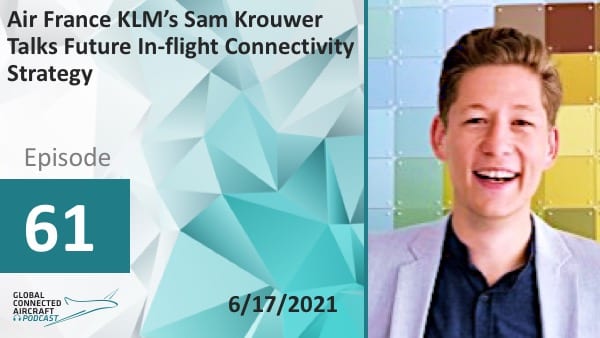
On this episode of the Connected Aircraft Podcast, Sam Krouwer, product owner of in-flight connectivity at Air France KLM, is the guest. This episode features his question and answer session with Mark Holmes, Via Satellite’s editorial director, during the recent Connected Aviation Intelligence virtual summit.
Air France KLM is one of Europe’s biggest airlines and wants to use connectivity to enhance the passenger experience as we head into a new era. As passengers start to gain more confidence about flying again, will their expectations in terms of the ‘Connected’ experience change?
Have suggestions or topics we should focus on in the next episode? Email the host, Woodrow Bellamy at [email protected], or drop him a line on Twitter @WbellamyIIIAC.
Listen to this episode below, or check it out on iTunes or Google Play If you like the show, subscribe on your favorite podcast app to get new episodes as soon as they’re released.


